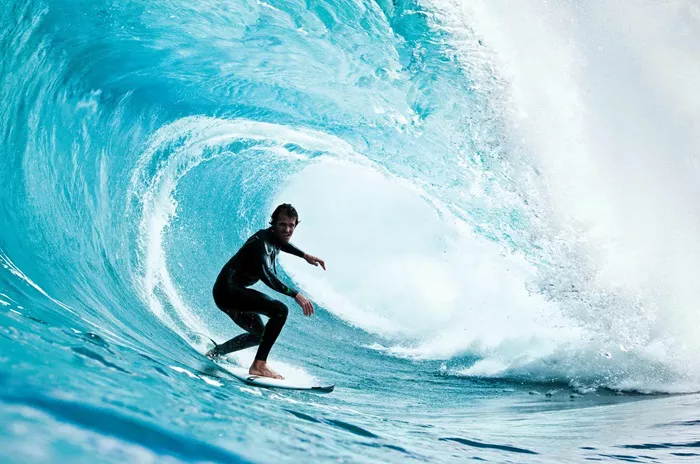Surfing is a thrilling sport that requires the right gear to maximize enjoyment and performance. One of the most crucial pieces of equipment for surfers is a wetsuit, which provides warmth, comfort, and protection against the elements. Choosing the best wetsuit for surfing can greatly enhance your experience in the water. This guide explores everything you need to know about selecting the perfect wetsuit for your surfing adventures.
Understanding Wetsuits: Types and Materials
Types of Wetsuits
Full-Length Wetsuits: Ideal for colder water conditions, covering the entire body.
Spring Suits (Shorty Wetsuits): Suitable for warmer waters, typically covering the torso and thighs.
Top and Bottom Separates: Offers versatility with separate tops and bottoms for different water temperatures.
Wetsuit Materials
Neoprene: The primary material for wetsuits, known for its insulation properties and flexibility.
Seams and Stitching: Discussing the importance of sealed, taped, or glued seams for minimizing water entry.
Key Considerations When Choosing a Wetsuit
Fit and Sizing
Importance of Proper Fit: How a well-fitted wetsuit enhances comfort and performance.
Sizing Guides: Understanding size charts from different manufacturers and how to measure for the best fit.
Thickness and Temperature Rating
Understanding Neoprene Thickness: How thickness affects warmth and flexibility.
Temperature Ratings: Matching wetsuit thickness to water temperature ranges for optimal comfort.
Mobility and Flexibility
Stretch and Flexibility: Evaluating neoprene stretch ratings and panel design for unrestricted movement.
Performance Features: Considerations for paddle zones, ergonomic paneling, and stretch materials.
Features and Technologies in Modern Wetsuits
Thermal Lining and Insulation
Fleece and Thermal Lining: Enhancing warmth retention without adding bulk.
Innovative Insulation Technologies: Advances in thermal materials for superior heat retention.
Water Entry Prevention
Seam Sealing: Different types of seam sealing methods and their effectiveness in preventing water entry.
Zipper Systems: Comparing back zips, chest zips, and zip-free entry systems for comfort and water sealing.
Durability and Maintenance
Abrasion Resistance: Evaluating durability against wear and tear from surfing conditions.
Care and Maintenance: Proper wetsuit care to prolong lifespan and maintain performance.
see also: How Long Does It Take To Learn Surfing?
Top Brands and Models Review
Leading Wetsuit Brands
Comparison of Popular Brands: Analysis of top wetsuit manufacturers known for quality and innovation.
Customer Reviews and Feedback: Insights from surfers on their experiences with different brands and models.
Recommended Wetsuits for Different Conditions
Cold Water Wetsuits
Top Picks: Highlighting the best wetsuits for surfing in cold water conditions.
Features and Benefits: Detailed reviews of recommended models and their specific features.
Warm Water Wetsuits
Best Choices: Reviews of spring suits and shorty wetsuits ideal for warmer climates.
Performance in Warm Conditions: How these wetsuits enhance comfort and performance in tropical waters.
Buying Guide and Tips for Surfing Wetsuits
Budget Considerations
Value vs. Investment: Understanding the balance between price and quality in wetsuit purchases.
Affordable Options: Budget-friendly wetsuits without compromising on essential features.
Where to Buy
Retail vs. Online: Pros and cons of purchasing wetsuits from local surf shops versus online retailers.
Warranty and Return Policies: Importance of customer support and after-sales service.
Conclusion
Final Thoughts on Choosing the Best Wetsuits for Surfing
Choosing the right wetsuit is a personal decision influenced by factors such as climate, water temperature, and personal preference. By understanding the types, materials, and features available, surfers can make informed choices that enhance their comfort and performance in the water. Whether surfing in icy swells or tropical breaks, the best wetsuit will keep you warm, agile, and ready to catch the perfect wave.
Appendix: Glossary of Terms
Neoprene: Definition and properties of the material used in wetsuits.
Seam Sealing: Explanation of different methods to prevent water entry through seams.
Thermal Lining: Benefits and types of insulation used in modern wetsuit designs.
This article aims to provide a comprehensive resource for surfers looking to invest in the best wetsuit for their needs, ensuring enjoyable and safe surfing experiences in any conditions.
- How Hard Is It To Learn Surfing?
- Understanding The Role Of Zinc In Surfing
- What Are Some Surfing Terms?

